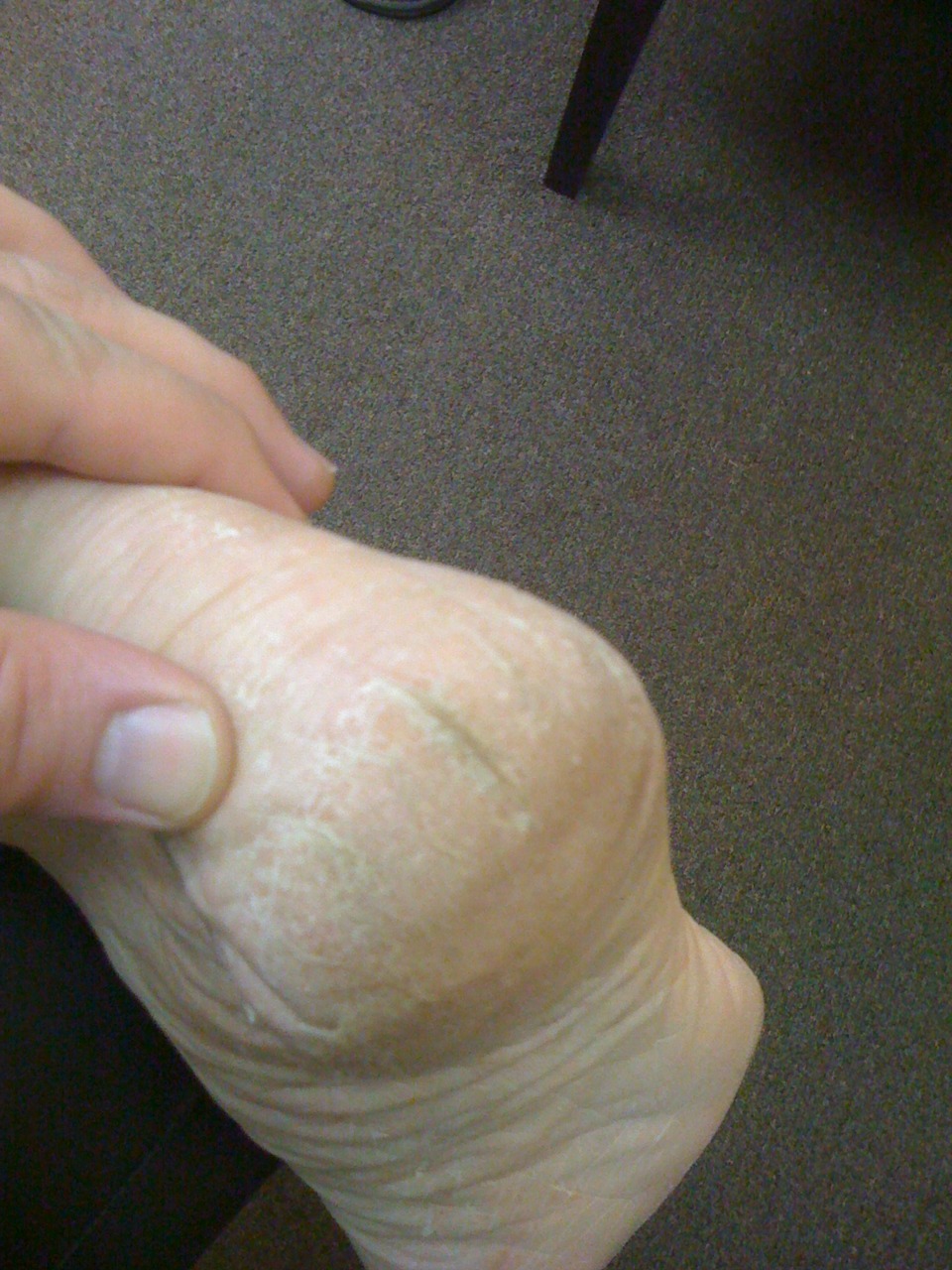Is that dry skin on your feet ? Lotions not working ? It is a yeast infection !
How many times will you smash your forehead into a wall before you realize that the bleeding suggests it might not be a good idea to continue ?
Similarly, how many times are you going to put lotion on your feet, or pumice off the dry skin and callouses before you ask “maybe this isn’t dry skin after all !” ?
Do your feet have something similar as to what is seen in the photo above ? Do your heels look like this ? Do they have the deep fissured cracks ? Do you have similar powdery white appearing stuff on your feet ? Are lotions not taking care of all this “apparently dry” skin ?
Candida albicans is a yeast that lives in harmony in and on our body until something throws off the delicate balance, causing the fungus to proliferate wildly. When Candida is allowed to build up in the body, over time a wide variety of severe symptoms can occur. Without proper treatment, the yeast overgrowth can be extremely dangerous.
Candida buildup in any one place in or on the body indicates that a balancing act is off when it comes to normal body system regulation. Candida overgrowth can cause cognitive problems, genitourinary, gastrointestinal, allergic and even (as we see here) dermatological problems. The skin is the body’s largest organ and it is also susceptible to problems.
Sometimes referred to as Athletes foot, in this case a fungus, it spreads easily through contact. Exposure to the fungus does not guarantee its growth and conditions must be right for the fungus to spread. Athletes foot is a fungal infection of the skin of the feet, which can also involve reactions by the feet and skin to toxins produced by candida/fungus overgrowth.
- Red and/or pale skin.
- Mild to intense itchiness, mostly in between the toes.
- Burning and inflammation.
- Cracked or blistered skin.
- Skin patches and scaling of the skin.
- Skin fissures (small cracks).
- Toenails may become affected as athlete’s foot progresses causing thick yellowish nails that are malformed, thickened and crumbly, called onychomycosis.
- Fingernails can also become affected just like toenails.
Fungus on the feet can also develop into or enable other opportunistic issues such as calluses, corns, warts, and horny growths, or keratotic tissue (hardened horny growths or build-up). Active growth of the fungus is also supported by nutrients contained in such horny growths.
Now do not dismiss this apparently benign problem. We have had patients experience bleeding from these deep fissures and cracking and we even had one client have one of these bleeding fissures get infected with Staph Aureus and almost lose their entire leg from the “flesh eating bacteria”. So we do not take this apparently benign infection lightly and we suggest you not either.
Find a doctor that will properly diagnose the problem and then look deeper for signs and symptoms that indicate where in the body the imbalance is located. We have found it is usually a GI (gastrointestinal) tract problem, one of dysbiosis (normal flora imbalance) in the bowels.
Yeast and fungal infection, they are definitely not just for athletes alone. If you have it, it is in all of your shoes, on your shower floor, and anywhere it can harbor growth. But do not freak out. Just take care of the problem and move on. It is a mere several weeks to months to remedy. Just get the right solution for the job. When it comes to yeast we suggest 2% miconazole cream (yes, vaginal yeast cream) be trialed, but it isn’t a fix if that is not the problem. See someone who knows. Sadly the yeast problem is missed by most in the field, we have no idea why but it is.
Shawn and Ivo…….not just your regular foot geeks.
















